I recently spent an afternoon getting the original Oblivion to work optimally on Steam Deck. Despite being “playable” out of the box, it’s kinda not: the vanilla PC version of Oblivion lacks gamepad support, meaning gamepad glyphs aren’t present. While the Steam Deck’s community controller layouts tab is a godsend for situations like this, it still means having to adapt to the disconnect between keyboard or mouse prompts and the Steam Deck’s Xbox-style glyphs.
Or, of course, installing mods. After an hour or so spent installing mods, OG Oblivion transformed from a dubiously “playable” Steam Deck RPG into something that rivals Skyrim in terms of a brilliantly optimised handheld experience. It’s just perfect. But now that Oblivion Remastered is out, and with a Steam Deck “Verified” status to boot, is any of that hassle worth it anymore?
Part of the reason I dropped an Oblivion replay on Steam Deck is because of all the rumours of the remaster, but I probably shouldn’t have waited: Steam Deck can definitely run the remaster, but—and hear me out—I’d still recommend going with a modded version of the original.
You may like
But who knows, you may feel differently. If you like a locked 60 fps framerate and crisp albeit slightly antiquated graphics on ultra settings, with over a decade worth of mods to draw from, OG is the clear winner. If you prefer modern UE5 graphics at a framerate that struggles to keep 30 fps in most outdoor areas, and with that low-spec vaseline quality that also affects other “Verified” titles like Kingdom Come Deliverance 2, Final Fantasy VII Rebirth and The Last of Us Pt. 1, then sure, preference the remaster.
Image 1 of 2
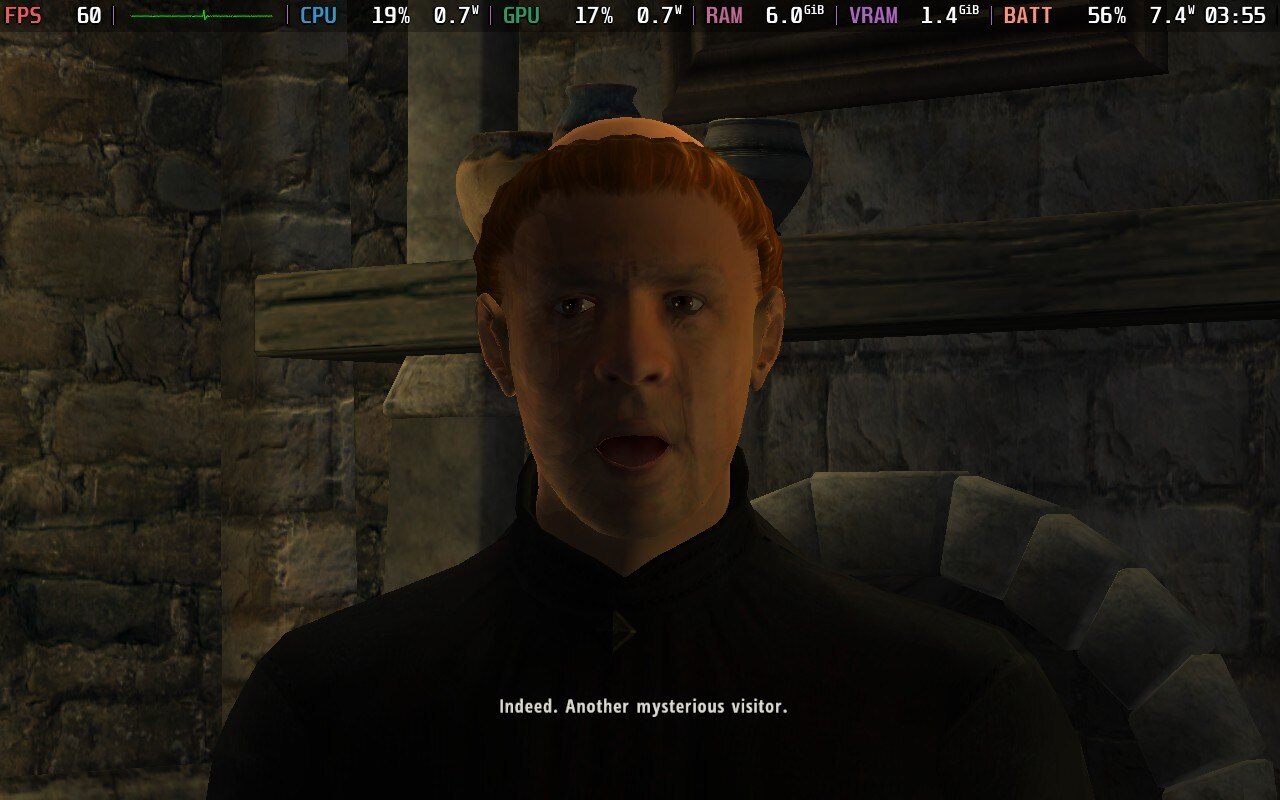
(Image credit: Bethesda)
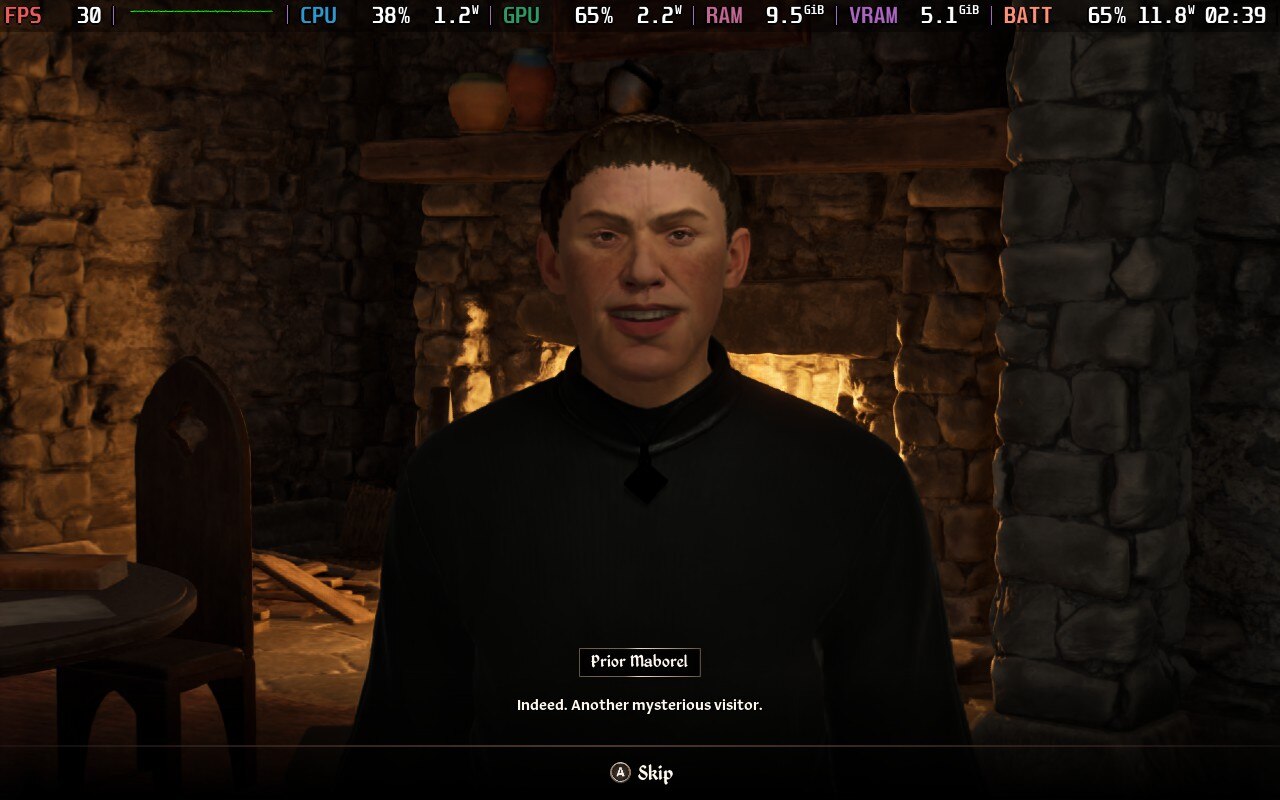
(Image credit: Bethesda)
I don’t expect Steam Deck to run these aforementioned games perfectly: it’s a small miracle that a handheld manages them at all, especially one that released three years ago. But it is increasingly the case that one should not mistake the “Verified” category to mean “this is a brilliant experience on Steam Deck”. Remaster definitely runs on Steam Deck with no fuss, but it doesn’t look good or run particularly well.
The starter dungeon can mostly keep to a solid 30 fps, but as you’d expect, the open world proves patchy at best. Using the automatic “low” quality graphic settings, traversing the open world around the sewer exit will occasionally drop to around 21 fps, but it’s mid-combat when things get shaky. During a prickly encounter with two dogs and a goblin on a grand hillside overlooking the Imperial City, the combination of smudgy image quality and an average 25 fps (dipping lower occasionally) made combat a real drag.
It gets worse, too: west of Lake Rumore I experienced drops to 15 fps at times, though I suspect this occurs when the game is loading in a new part of the map: it tends to coincide with the UI prompt announcing a new area. Which probably explains why the tomato plants at Odill Farm caused my Steam Deck to grind to a fleeting halt, likewise when I discovered Weynon Priory. The area around the first Oblivion gate, near Kvatch, would bring me down to 10 fps at times, seemingly thanks to the fancy modern thunder effects.
Keep up to date with the most important stories and the best deals, as picked by the PC Gamer team.
Drops like this are fine, I guess, when there’s not an imp throwing fireballs at me, or a dog taking chunks out of my rear. But combat in the open world against more than one foe, with a detailed vista in the background, just feels terrible. When I lower all settings from “low” to “lowest” and toggle from XeSS “performance” to “ultra-performance” mode, the frame rate around Lake Rumore varies from around 25 to 50, while in the less detailed area around Kvatch, it can actually hold to 60 fps most of the time, though the image quality is, frankly, pretty shit.
To summarise (and this applies to the Steam Deck OLED, where a difference in battery life will probably be the biggest difference):
Swipe to scroll horizontally
Steam Deck OLED
Oblivion OG
Oblivion Remastered
Average FPS
Locked 60 fps
Hovers around 30 fps
Battery life
Up to six hours, but realistically, five hours
Up to three hours at best
Average battery draw
Rarely above 8w
Between 15 and 22w
Price
$15 / £15 / AU$20
$50 / £50 / AU$85
Some visual comparisons:
Image 1 of 2
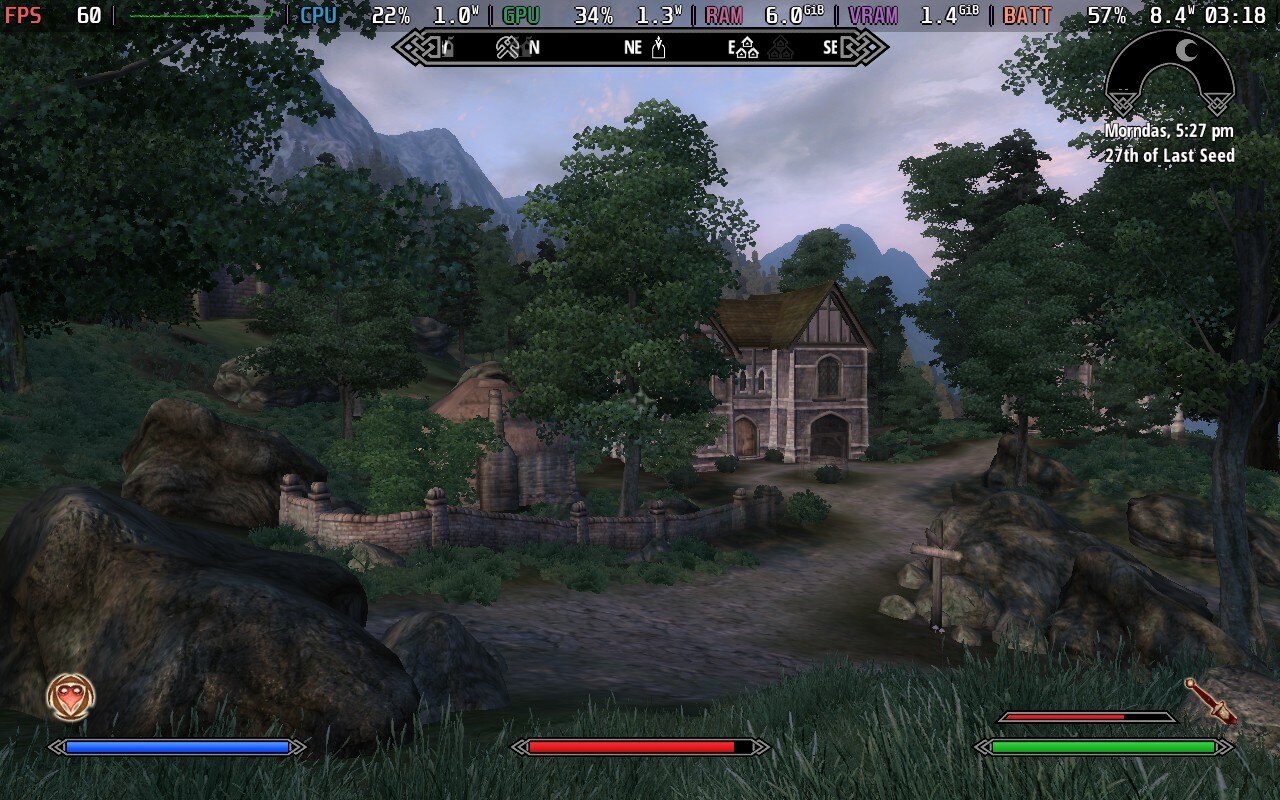
The original Oblivion on Steam Deck, with the Northern UI mod installed(Image credit: Bethesda)
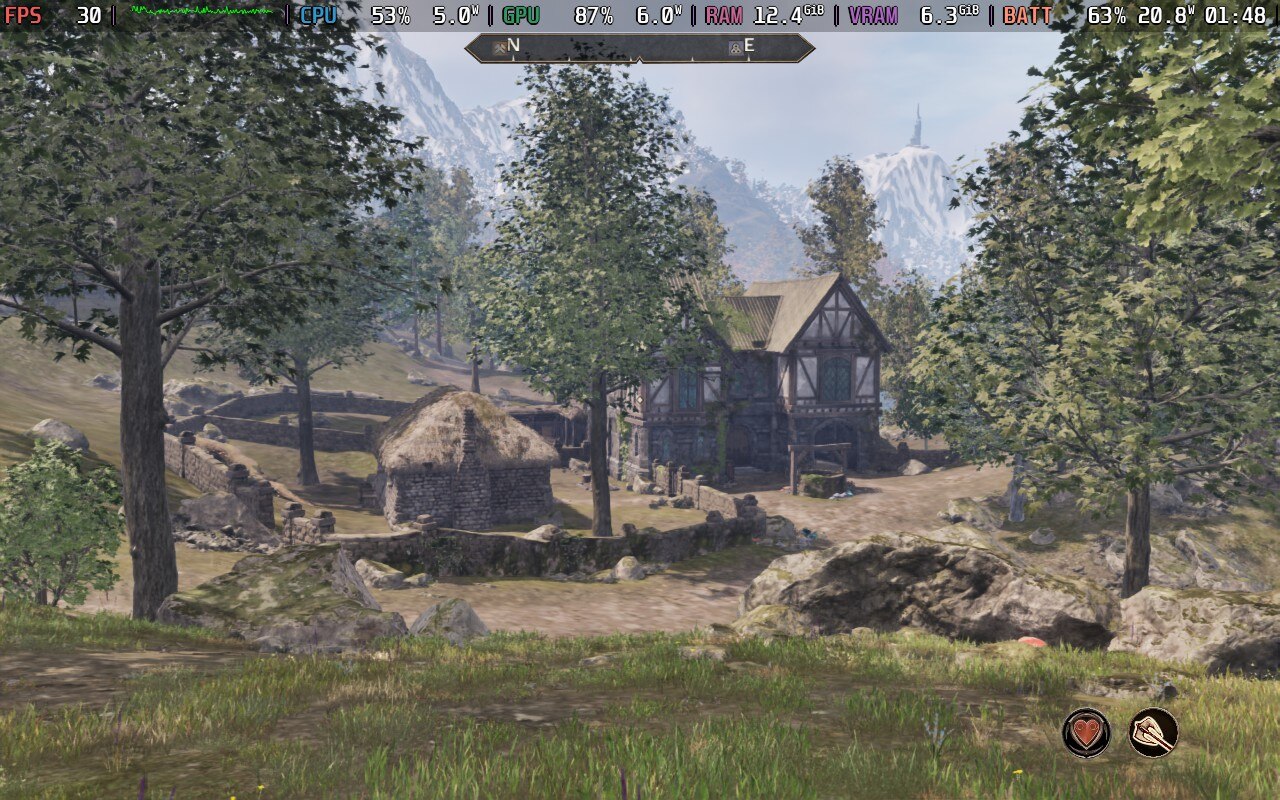
The same location captured in Oblivion Remastered, running on Steam Deck(Image credit: Bethesda)
Image 1 of 2
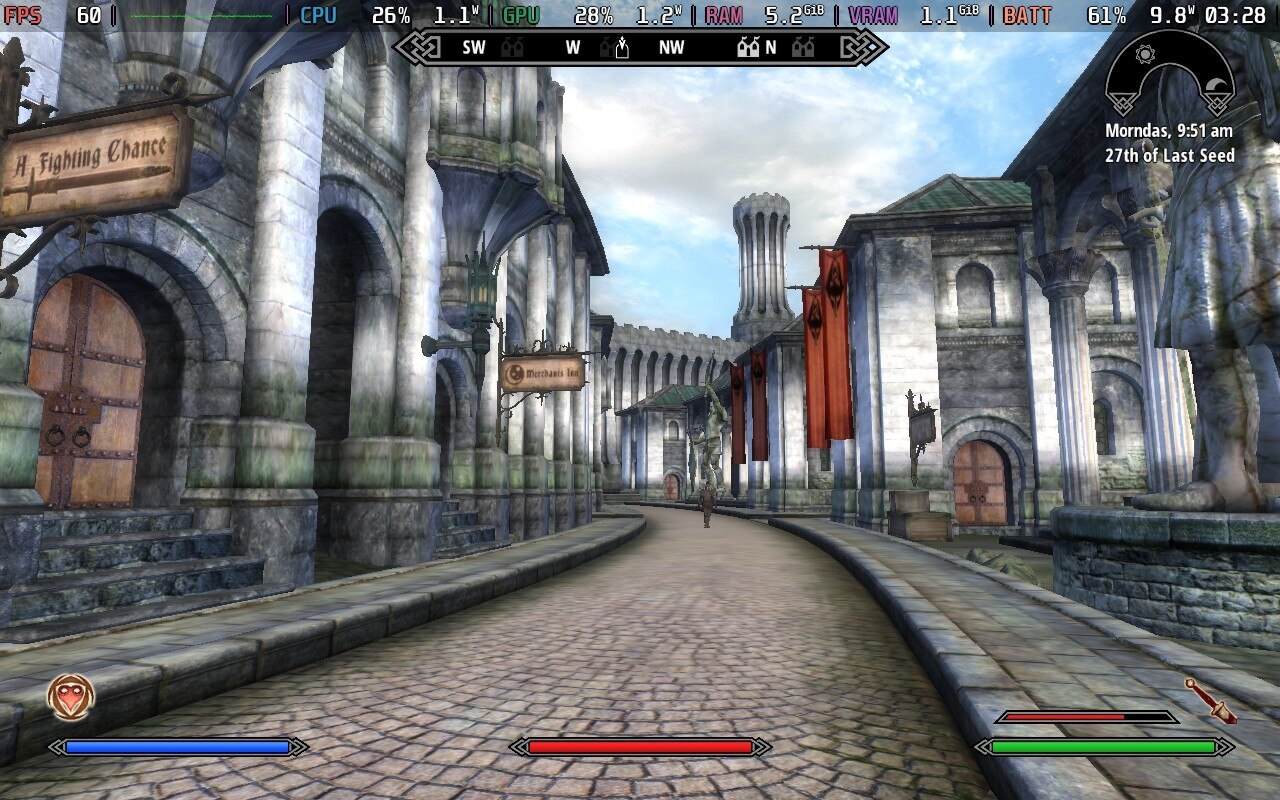
Inside the Imperial City in the original Oblivion, running on Steam Deck with the Northern UI mod(Image credit: Bethesda)
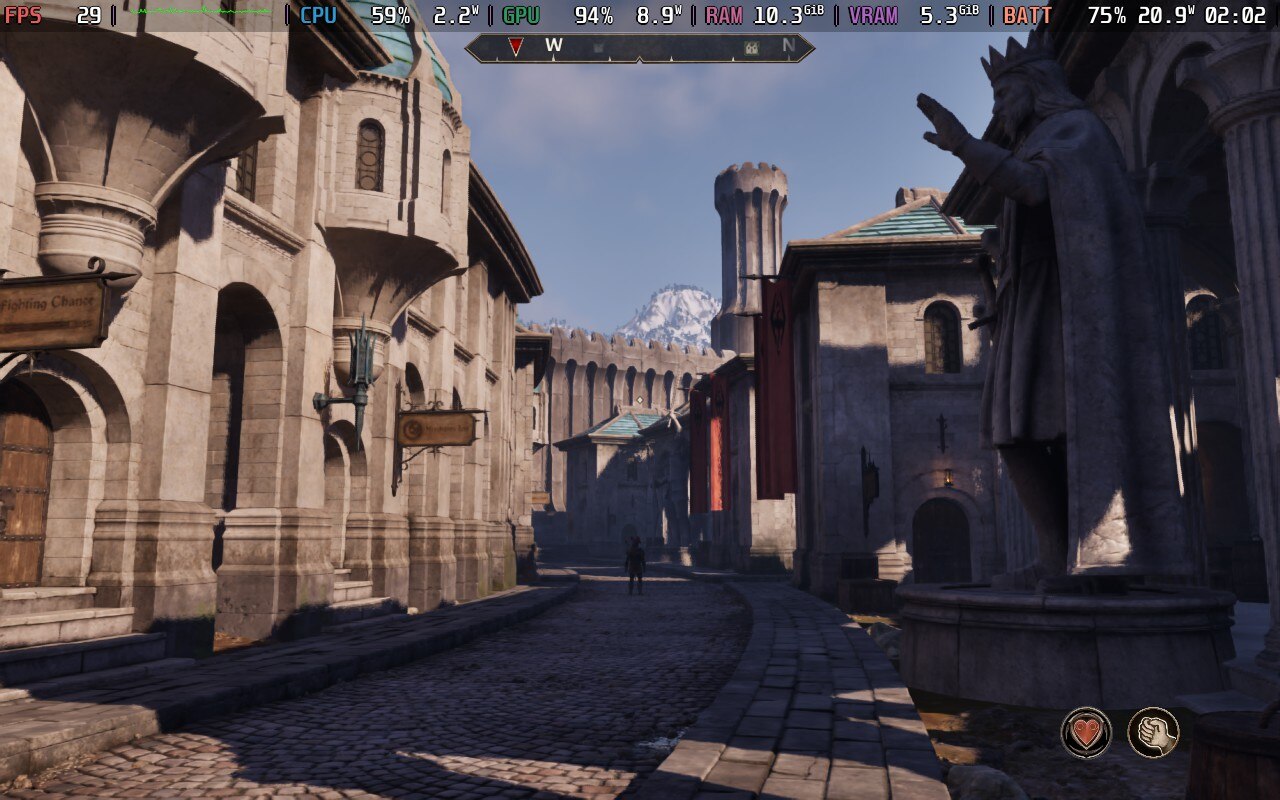
Inside the Imperial City in Oblivion Remastered, running on Steam Deck(Image credit: Bethesda)
Image 1 of 2

An Oblivion gate in the original version of Oblivion, running on Steam Deck with the Northern UI mod(Image credit: Bethesda)
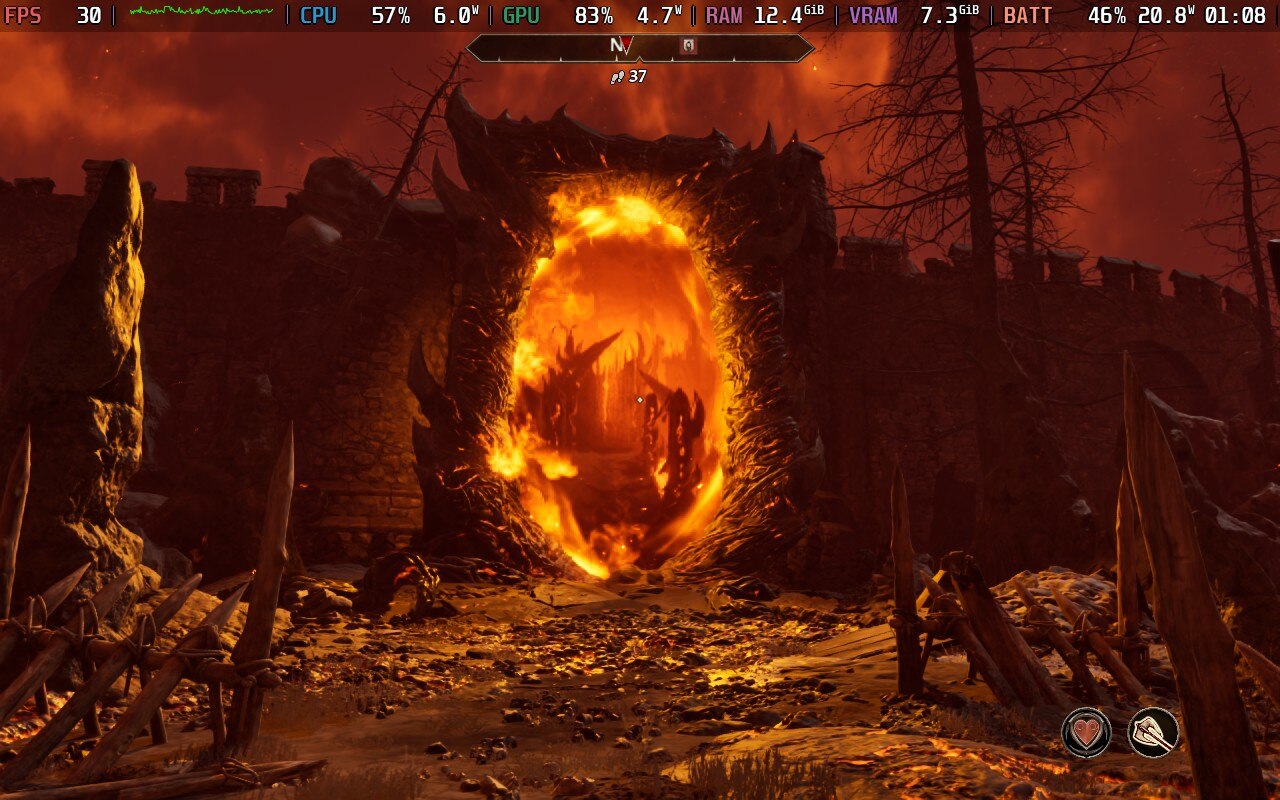
An Oblivion gate in the remastered version of Oblivion, running on Steam Deck(Image credit: Bethesda)
Image 1 of 2
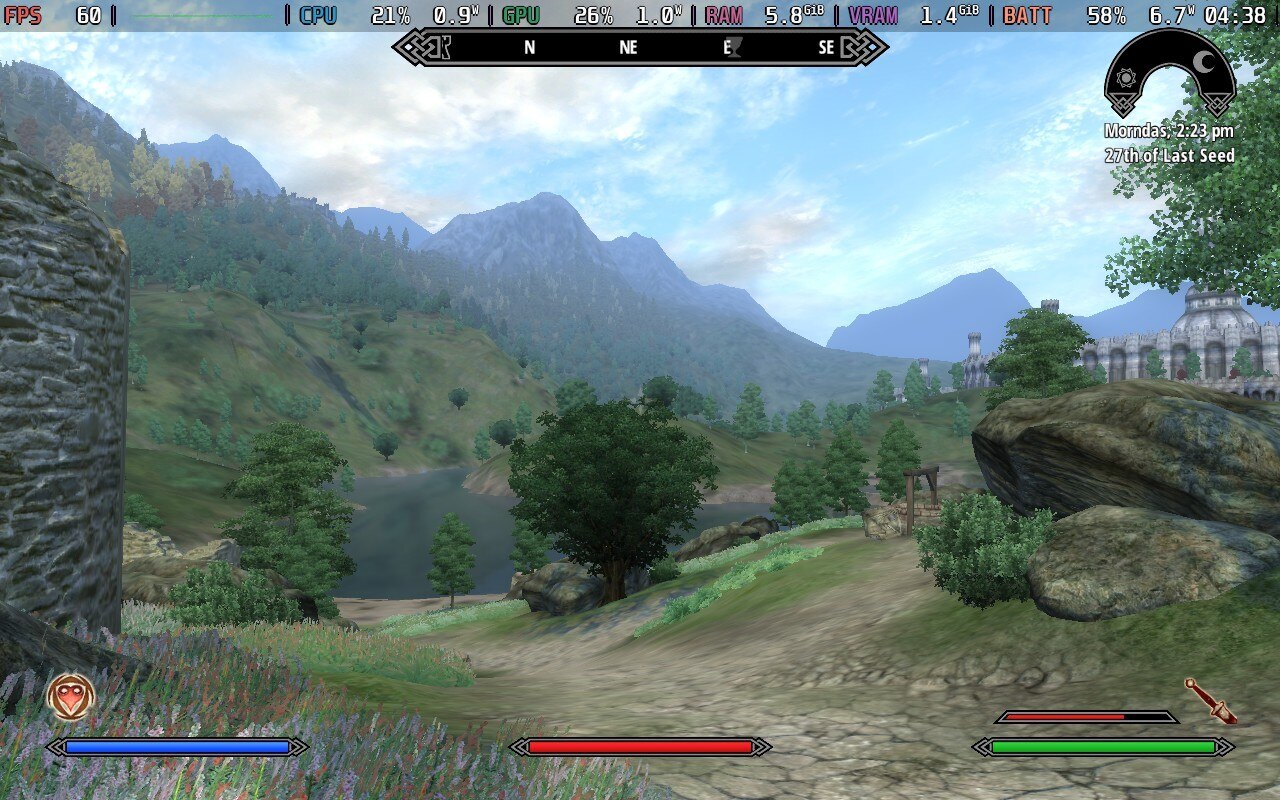
Gorgeous vistas in the original version of Oblivion, running on Steam Deck with the Northern UI mod(Image credit: Bethesda)
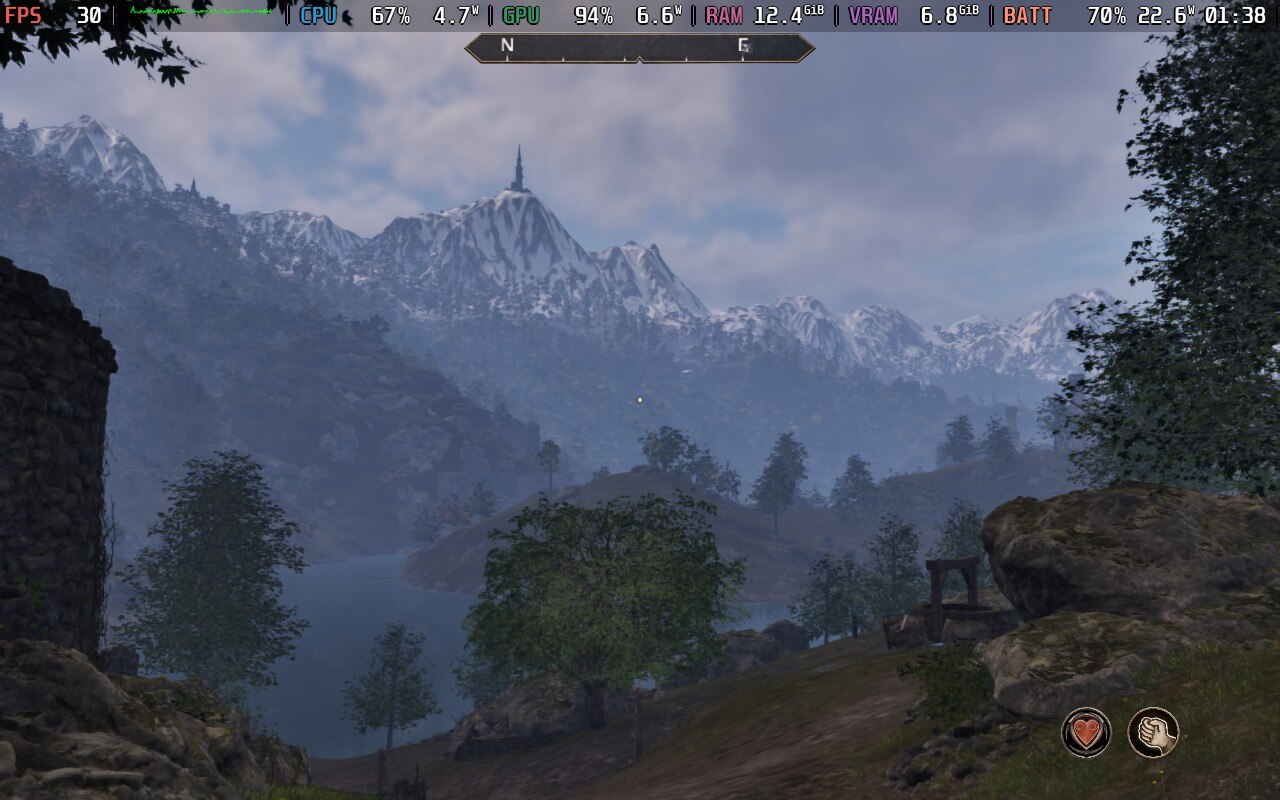
The same vista in Oblivion Remastered, running on Steam Deck(Image credit: Bethesda)
Is any of this a dealbreaker? I played Skyrim at launch on the PlayStation 3, so it depends on your perspective. Playing Oblivion Remastered actually made me nostalgic for the days of substandard console ports. If this was the only way to play Oblivion on Steam Deck, we’d all have to make do. But ye olde Oblivion is just sitting there, and it’s perfect on Deck.
Priming Oblivion for modding on Steam Deck is an easy process and will work with the version of Oblivion you can buy on Steam and probably already own. I followed these helpful instructions from user halycon8 on the Steam Deck subreddit and they held me in good stead; it takes about an hour all up. To summarise, it’s a matter of downloading and installing the Oblivion Script Extender in desktop mode, which is essential for most mods, and then eventually downloading the Northern UI mod, which not only adds controller glyphs but also reskins the UI to mirror Skyrim’s cleaner, controller-first approach. Don’t worry: If you prefer the quaint high fantasy approach of the original Oblivion’s UI, there’s a version of the mod that doesn’t include the reskin.
Follow the afore-linked instructions and you’ll have a silky smooth version of Oblivion running on your Steam Deck that will run at ultra settings and—though this may depend on how many mods you end up using—will run on battery for a projected six hours. Not only that, but Oblivion: Game of the Year Edition costs $15 on Steam compared to the $50 price of the remaster.
To be clear: I’m not being a crank. I’m not saying you shouldn’t play Remastered. If you game across both desktop and handheld, but predominantly the former, it’s probably worth getting the newer and shinier version if you like newer and shinier graphics. If you’re in the habit of streaming from your desktop to your Deck, the same holds true. I just think the original Oblivion is a far better native experience on Deck, and since it’s essentially the same game (albeit with some quality of life improvements) you might as well opt for the version that runs better on handheld.
Since we’re here, I should point out that Daggerfall is also a brilliant Steam Deck experience after a bit of work, even though its official Steam Deck compatibility status is “unsupported”. Just grab the original game on Steam (it’s free) and install the Daggerfall Unity mod, which, as the name suggests, transplants Bethesda’s gargantuan fantasy life sim into the Unity engine. Full installation instructions are in this tidy video below:
How to Play Daggerfall On Your Steam Deck In 2024 – YouTube 
